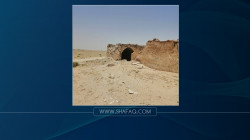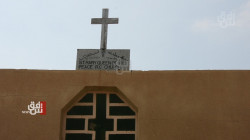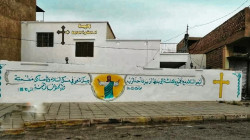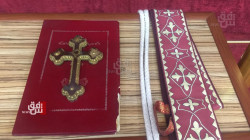Pushed away by wars and crises, Iraqis long for the world's oldest churches and temples
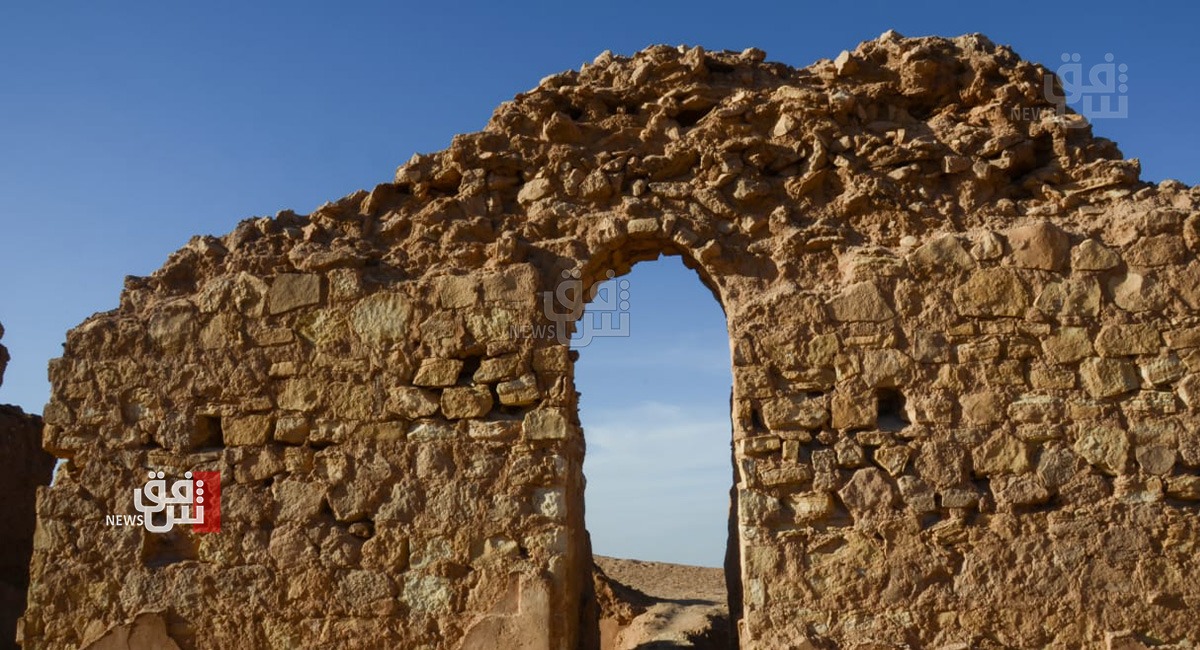
Shafaq News / Mesopotamia – or Iraq- encompasses many religions, which monuments and landmarks still exist today, though some have been destroyed due to neglect and vandalism. Believers have nothing left but nostalgia and longing to visit them after wars, political crises, and forced displacement for centuries have kept Iraqis from visiting those areas.
Shafaq News agency highlighted the most important and prominent landmarks of churches and temples that still refuse to bend over time.
Al-Aqiser Church
One of Iraq's historical churches, according to archaeologist Hussein Yasser, who noted that Al-Aqiser is a large old settlement located north of Al-Ukhaidir Fortress on the road leading from the fortress to Ayn Al-Tamr district in Karbala governorate, "The most important landmark in Al-Ukhaidir Fortress is Al-Aqiser Church, which dates back to the 5th century AD. The Church's construction dates back to the 5th century when this area was under the rule of the Lakhmids (268 AD-633 AD)."
"This state was under the Christian Sasanian Empire's rule. Funeral rites were held near this Church, and many delegations visited it," archeologist Hussein Yasser said, noting, "The oldest church in the world is the Church of Kokhi."
The oldest Church in the world
Christianity in Iraq began in the first century, where the Church of Kokhi is located, traces of which remain in the Al-Mada'in area southeast of the capital Baghdad.
Located 35 km south of Baghdad, the Kokhi Church is located in Ctesiphon (Al-Mada'in - Salman Pak) and is the oldest Church in the world.
There are also churches in Al-Hirah, Kufa, Karbala, and Christian areas, but negligence was a major reason for their demise.
Pope Francis's visit to Iraq has positively impacted taking care of archeological churches, where all Mesopotamia's monuments today need to be nurtured, restored, and taken care of.
According to several Iraqi historians, these historic sites suffer from government neglect. However, they also did not hide their hope of creating an effective government footprint to protect antiquities, support, and care for churches.
Judaism
The Jewish religion, which was present in Iraq, has only monuments and temples left, according to The History of Religions researcher Qassim Al-Hasnawi, who explained, "Judaism is one of the three Abrahamic religions (Jewish, Christian, and Islamic), and centers in Iraq."
Babel governorate was the Jews' outpost, even though they were scattered throughout Baghdad. Their place of worship was in the shrine of Prophet Dhu Al-Kifl, which they consider their holiest place and used to live in its vicinity.
"The ethnic and religious diversity in Iraq has given it an aesthetic, historical, and religious value, as peaceful coexistence between Muslims and Jews was great," Al-Hasnawi said.
"Even the owners of the Hawza (a seminary where Shiite Muslim scholars are educated) were exchanging experiences in Prophet Dhu Al-Kifl's shrine, next to which the historic Al-Nukhailah Mosque is located. Muslims and Jews had deep-rooted social relations, and Iraqi ancestors saw the nature of this bond between them," he added.
However, most Jews were forcibly displaced from Iraq (1948-1951), before and during the declaration of the Israeli state in Palestine, in agreement with the then Iraqi government.
Their numbers remained small, with 2.6 percent of the population of Iraq. The forced displacement did nothing but break the Jews' hearts as they were forced to leave their homes and property, such as The Daniel Market, which remains neglected until now, according to historian Qassim Al-Hasnawi.
Dhu Al-Kifl
He is one of the prophets sent to the Israelites according to the Heavenly Books. An old shrine was built for him in Iraq after being killed during the so-called "Babylonian First captivity". Later on, his shrine became one of the landmarks of Muslims and Jews together, as Muslims still consider it sacred.
After 2003, the shrine became under the auspices of the Shiite Endowment Diwan, which preserved some of its Islamic heritage because it is located next to the Al-Nukhailah Mosque.
The Dhu Al-Kifl Shrine witnessed a restoration, for it was constructed by Muhammad Khuda Banda and his grandson Hulago Khan, and the age of its minaret is 800 years.
Several rituals are now held in the shrine, and it is visited by different States and religions. It also contains some Jewish writings.
